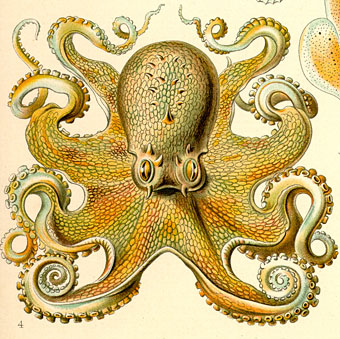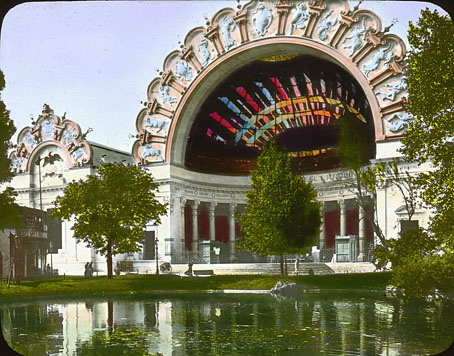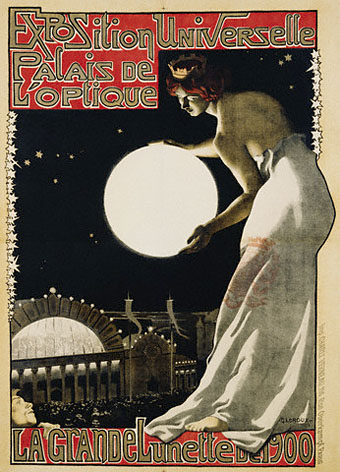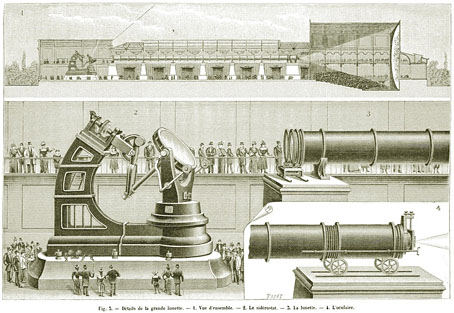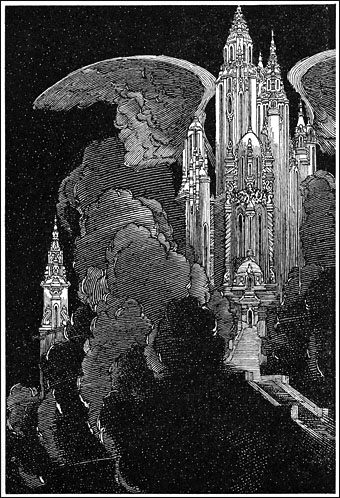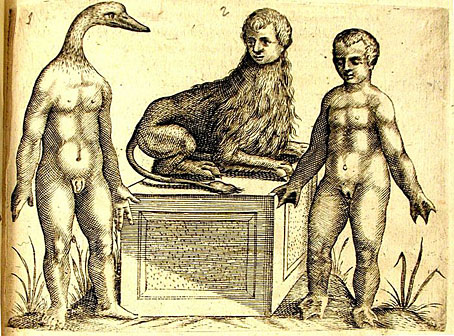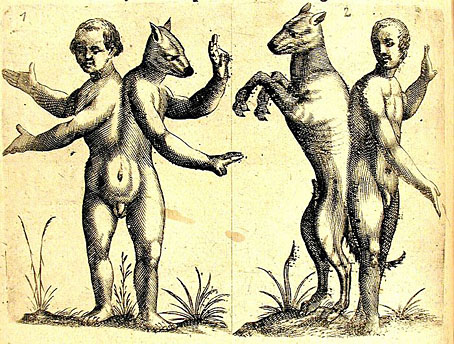
Histioteuthis ruppellii.
Suckered pseudopods flex and writhe again this week with simultaneous postings at BibliOdyssey and Sci-Fi-O-Rama. Coincidence or some cephalopodic zeitgeist thing? You decide. BibliOdyssey has a fine set of natural history plates showing various squid and octopuses while Sci-Fi-O-Rama presents a small collection of illustrations by Barnaby Ward. If it’s boys and tentacles you want (and who doesn’t?), then there’s always the art of NoBeast.

Untitled drawing by Barnaby Ward.
Ernst Haeckel remains my favourite tentacle illustrator, and the octopus below is one of his examples from Kunstformen der Natur (1899–1904). Somewhere (although Cthulhu knows where) I have a drawing by Hal Foster from one of his Prince Valiant strips showing a sinister octopus in a pit which is almost a match for Haeckel’s, and may even have been based on it. If I ever find it again I’ll post it here. Meanwhile, China Miéville’s Kraken is currently lurking on bookshelves, and let me remind you again that he discusses that novel and other works over at Salon Futura. While we’re on the subject, let’s not forget the Octopulps.
Octopus by Ernst Haeckel.
Finally, a note to say that my webhost is moving this site to a new server which may cause some disruption to these pages for the next few days. As always, your patience is appreciated.
Previously on { feuilleton }
• Jewelled butterflies and cephalopods
• Haeckel fractals
• Ernst Haeckel, Christmas card artist
• The art of Rune Olsen
• Octopulps
• The art of NoBeast

